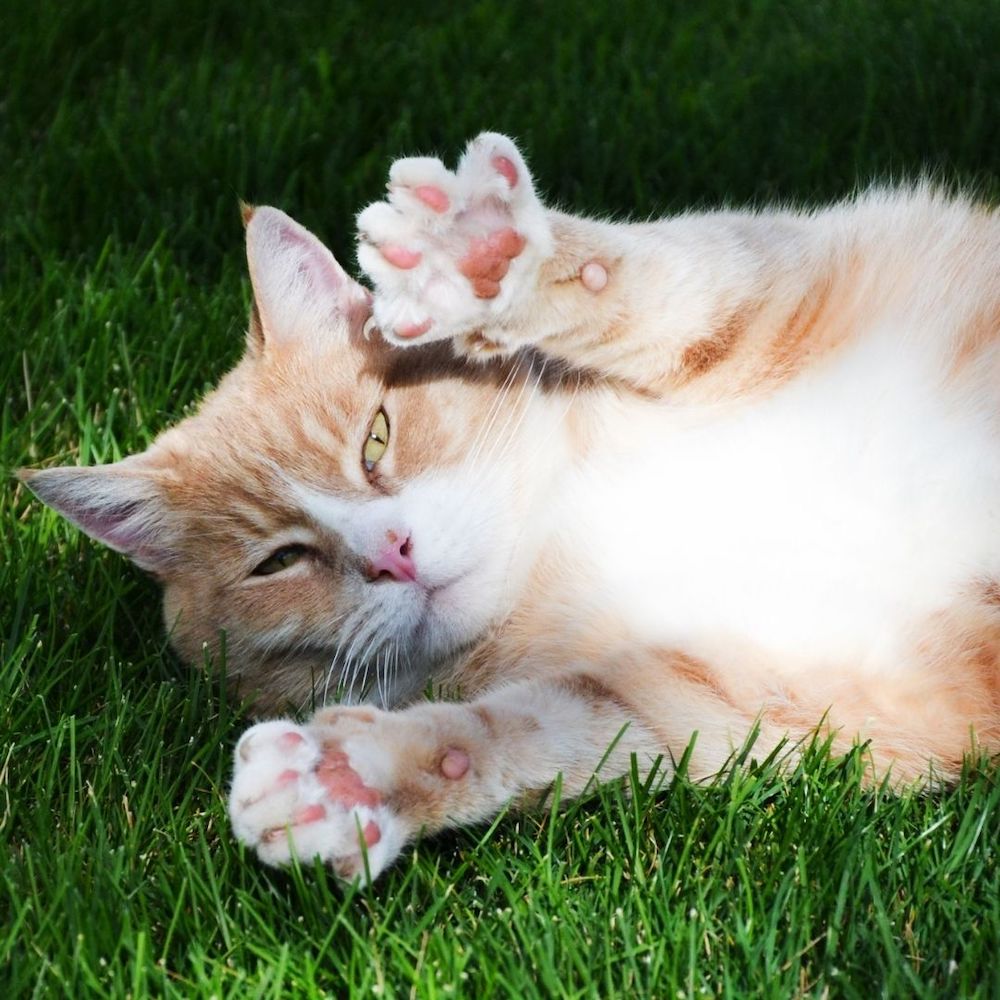
Coat, Teeth, Ears and Claws: The 4 Essentials of Cat Care
18 Oct 2021.
Felines may be independent animals, but they still need help from their humans every now and then. Are you familiar with the cat care essentials? Cat in a Flat breaks down the how, when, and why of brushing your kitty’s fur, cleaning their ears, and other basic cat care!
Table of contents
Should I brush my cat?
Grooming is a big part of cat care. Kittens learn to groom early on, and adult cats spend several hours a day cleaning themselves. While it’s rarely necessary to bathe your cat, brushing their coat is important for overall cat care and health.
Some cats need help with grooming, especially those with long fur. Depending on the breed, you’ll need to brush your kitty more often. A long-haired cat might need grooming once a day, while short-haired cats can be brushed every 2-3 days.
Brushing can be a therapeutic cat care experience for both you and your kitty. It strengthens your bond and creates a greater sense of trust with your cat. You’re also helping Mr Whiskers get rid of excess fur, stimulate his skin, and give his coat a healthy shine. This translates to fewer furballs and a happier, healthier cat!
For all our lovely cat sitters out there: make sure to get a clear understanding of your client’s cat care routines. It’s important to know before you start cat sitting how often your furry friend needs to be groomed, and how to do it properly.
How to brush your cat:
- Always use a brush created for feline fur. A fine-tooth brush will help remove excess dirt and tangles. A soft bristle will spread the natural oils and condition your kitty’s coat.
- Let your cat smell the brush first. It’s a good sign if they rub against it because this means they’re spreading their scent!
- Always brush in the direction of fur growth. Cats love being brushed around the face, so start below the chin and work your way back to the tail. Avoid brushing your kitty’s belly, this is something cats hate.

Should I clip my cat’s claws?
Clipping your feline’s claws probably sounds like one of the least pleasant parts of cat care. No doubt it can be tricky. Many kittens and cats don’t like when you handle their paws. And no cat owner wants to be on the receiving end of a swipe from an irritated furball!
Whether or not you should clip your cat’s claws depends on if they are indoor or outdoor cats. If your kitty spends a lot of time outdoors, they’ll likely wear out their claws by scratching trees or posts. However, if your kitty is mostly indoors, you’ll need to take cat claw care into your own hands (or paws).
Declawing might seem like a tempting solution to help stop your indoor feline from scratching furniture (or you). However, this is frowned upon by the veterinary community. Declawing cats is illegal in the UK, and is often compared to having your fingers cut off at the joints. Is it any surprise this can be a very painful and stressful experience for your fur friend? Declawing can also affect balance and cause psychological issues, which in turn may lead to an unhappy and aggressive cat.
Although declawing isn’t the solution to your cat care woes, managing your furry friend’s claws needn’t be a major ordeal. Cats scratch to maintain claw health and mark their territory. Make sure you have plenty of scratching posts and pads around your home, and that you trim their nails every 10-14 days.
How to clip your cat’s claws:
- Only use claw clippers or scissors specifically for cats.
- Approach the cat when they’re in a calm, relaxed state—after a meal or when they’re sleepy.
- Gently hold their paw between your fingers and rub it for a few seconds. This helps the cat get used to you touching their paw.
- Squeeze their paw between your thumb and forefinger to extend their claws. Release immediately and give your kitty a treat. Repeat this a few more times so your cat feels calm and secure with you handling their paws.
- Take note of the of the pink bit at the base of your cat’s claw. This contains a small blood vessel, so you want to avoid cutting too close to it. Only trim the white area near the tip of the claw.
- Take your time and don’t try to do it in one sitting. Reward your cat after finishing one paw. If the cat tries to run away or seems annoyed, stop immediately and try again the next day.
Should I clean my cat’s ears?
Most cats clean their own ears, so this is a part of cat care that owners rarely need to worry about. However, in some cases a kitty may be prone to wax build-up, ear infections, or is simply old or sick. This is when you need to step in to help them.
Feline ears are very delicate and should be handled with care. Do not attempt to clean a cat’s ear the way you would your own, you could end up damaging it or making the kitty feel worse. And never use Q-tips for cat ear care. There is a high risk of perforating your furry friend’s ear drum or damaging their ear canal. Cotton swabs can also push debris further into the kitty’s ear.
How to clean your cat’s ears:
- Consult with a vet first to make sure this is the right step for your cat’s care.
- Use a liquid ear cleaner specifically for cats.
- Wet a piece of gauze or a cotton ball with cleaner and wipe your cat’s ears from the inside out.
Should I brush my cat’s teeth?
A balanced diet is vital for your kitty’s dental (and general physical) well-being—which is why it’s not recommended to feed your cat a vegan diet. Brushing your cat’s teeth is also necessary to help reduce dental plaque, prevent bad breath, and improve Mr Whiskers’ overall oral health.
It’s never too late to introduce brushing into your cat’s dental care. Although it’s better to start from kittenhood, with the right technique you can acclimate your cat to daily brushings.
Frequent brushing can also help manage FORL—a painful autoimmune disease that affects your cat’s teeth. Get your furry friend’s fangs checked by a vet regularly. It’s important to recognise signs of FORL early on so you can manage it more effectively. There is no way to prevent FORL, and no way to know if your cat will get it or not. But by establishing a dental hygiene routine you will save your kitty pain and stress if they do.
Consult with your vet before you incorporate brushing teeth into your cat’s daily care. They can suggest proper techniques, and the right toothbrush and toothpaste for your feline friend. Never use toothbrushes or toothpaste intended for humans. The former can damage your kitty’s teeth, and the latter can be toxic!
How to brush your cat’s teeth:
- Start by placing a dab of toothpaste on your cat’s nose. This will allow Mr Whiskers to lick it off and familiarize himself with the taste.
- Brush your cat’s teeth when they are sleepy or relaxed.
- Place your palm on the top of your cat’s head and use your thumb and second finger to hold the cheekbones under the cat’s eyes.
- Gently tilt your kitty’s head upwards and use your thumb to lift your cat’s upper lip. Use the thumb of your other hand to pull down your cat’s lower lip.
- Do this for a few days without brushing your kitty’s teeth. This will help them get used to having their head held.
- Put a little toothpaste on the toothbrush and, using small circular motions, work your way from their back teeth forward.
Looking for more tips on how to keep your kitty happy and healthy? Learn to recognize the signs of a happy cat and how to minimise your cat’s separation anxiety while you’re at work.
- #catinaflat
- #pet care
- Cat Care


